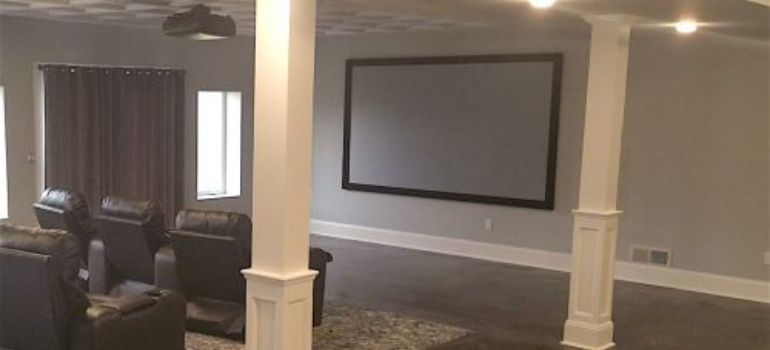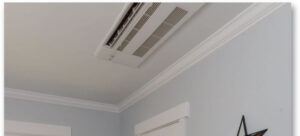When it comes to the structural integrity and safety of your home or building, many components play a crucial role. One such component that often goes unnoticed but is vital for the stability of your structure is the Lally column. These steel or concrete support columns are commonly used in basements and crawl spaces to provide additional support to beams and floor joists. But have you ever wondered how long Lally columns last and when you might need to replace them? In this article, we will delve into the lifespan of Lally columns and what factors can impact their durability.
Understanding Lally Columns
Before we dive into their longevity, let’s first understand what Lally columns are and how they function. Lally columns are vertical structural supports that bear the weight of the structure above them. They consist of a steel or concrete core encased in a protective shell, typically made of steel. These columns are adjustable in height, making them versatile for various structural needs.
Factors Affecting the Lifespan
The longevity of Lally columns can vary depending on several factors. It’s essential to consider these factors when evaluating the lifespan of these support columns.
1. Material Quality
Material quality is a critical factor that significantly influences the lifespan and performance of Lally columns. Lally columns are primarily made of steel or concrete, and the quality of these materials plays a pivotal role in determining how long they will last and how well they can support the structure they are meant to uphold.
- Steel Lally Columns:
- High-Quality Steel: Lally columns constructed from high-quality steel are more durable and have a longer lifespan. This type of steel is less prone to corrosion and rust, which can weaken the column over time.
- Corrosion Resistance: The steel used in Lally columns should ideally be coated or treated to resist corrosion. Corrosion can compromise the integrity of the column and significantly reduce its lifespan.
- Gauge and Thickness: The thickness of the steel and the gauge used in constructing the column are crucial factors. Thicker steel columns with a higher gauge are generally stronger and more durable.
- Concrete-Encased Lally Columns:
- Quality of Concrete: For concrete-encased Lally columns, the quality of the concrete mix used is essential. High-quality concrete with proper curing and strength is vital for longevity.
- Reinforcement: Some concrete-encased Lally columns may have steel reinforcement inside the concrete core. The quality and placement of this reinforcement affect the column’s overall strength and durability.
- Concrete Thickness: The thickness of the concrete encasement is another aspect to consider. A thicker layer of concrete provides better protection for the inner steel core and can contribute to a longer lifespan.
2. Load-Bearing Capacity
Load-bearing capacity is a critical factor that determines how much weight a Lally column can safely support. The ability of these columns to bear loads within their specified capacity is essential for the structural integrity and safety of a building or structure.
Here are some key points to consider regarding the load-bearing capacity of Lally columns:
- Manufacturer Specifications: Each Lally column is manufactured with specific load-bearing specifications provided by the manufacturer. These specifications outline the maximum load that the column can safely support. It’s crucial to adhere to these guidelines to prevent overloading.
- Consultation with Structural Engineer: When designing a structure or considering the use of Lally columns, it’s advisable to consult with a structural engineer. They can calculate the load requirements and determine the appropriate size and spacing of Lally columns to ensure they can support the intended loads.
- Load Distribution: Properly distributing the load across multiple Lally columns is essential. Placing too much weight on a single column can exceed its load-bearing capacity and lead to structural issues.
- Regular Inspections: Regular inspections of Lally columns are necessary to ensure they are not experiencing excessive stress or deformation. Signs of overloading may include cracks, bending, or noticeable sagging.
- Adjustability: One advantage of Lally columns is their adjustability in terms of height. This allows for fine-tuning the support as needed. However, it’s crucial to ensure that the columns remain within their load-bearing capacity even when adjusted.
- Upgrading if Necessary: If the load requirements change over time, it may be necessary to upgrade or replace Lally columns to accommodate the increased load. This should be done with the guidance of a structural engineer to ensure safety.
- Local Building Codes: Compliance with local building codes and regulations is essential. These codes often dictate the minimum load-bearing capacity and specifications for Lally columns in different types of structures.
3. Environmental Conditions
Environmental conditions play a significant role in determining the lifespan and performance of Lally columns. These columns are often used in basements and crawl spaces, which can expose them to a range of environmental factors that can impact their durability.
Here are some key considerations regarding the effect of environmental conditions on Lally columns:
- Moisture Exposure:
- Moisture is a common environmental factor that can affect Lally columns, especially if they are installed in a damp or flood-prone area. Prolonged exposure to moisture can lead to corrosion of steel columns or degradation of concrete encasements.
- Waterproofing and proper drainage systems can help mitigate moisture-related issues and prolong the lifespan of Lally columns.
- Temperature Variations:
- Extreme temperature variations, including freezing and thawing cycles, can have a detrimental effect on Lally columns, especially if moisture is present. These temperature fluctuations can cause expansion and contraction, potentially leading to cracks and structural weaknesses.
- Proper insulation and moisture barriers can help protect Lally columns from the adverse effects of temperature variations.
- Chemical Exposure:
- Exposure to corrosive substances, such as chemicals and salts, can accelerate the corrosion of steel Lally columns. This is particularly relevant in industrial or chemical storage areas.
- Regular cleaning and maintenance can help remove any potentially corrosive substances and protect the columns.
- Soil Conditions:
- The type of soil in which Lally columns are installed can also affect their durability. Soil with a high acidity level or corrosive properties can contribute to the deterioration of steel columns.
- Soil testing and proper foundation design can help mitigate the impact of adverse soil conditions on Lally columns.
- Proximity to Water Sources:
- Lally columns located near water sources, such as rivers or lakes, may be more susceptible to moisture-related issues. Regular inspections and protective coatings can help address these challenges.
4. Installation Quality
The quality of the installation process is a crucial factor that can significantly impact the performance and lifespan of Lally columns. Proper installation ensures that these structural supports can effectively bear the intended loads and withstand environmental challenges. Here are key considerations related to installation quality:
- Professional Installation:
- It is highly recommended to have Lally columns installed by experienced professionals who are knowledgeable about structural engineering and construction. Professionals understand the importance of precise placement and alignment to ensure the columns provide adequate support.
- Foundation Assessment:
- Before installation, a thorough assessment of the foundation and structural needs should be conducted. This assessment helps determine the number and placement of Lally columns required to support the load.
- Proper Footing:
- The footing or base on which the Lally column sits should be stable and adequately designed to distribute the load evenly. A properly sized footing helps prevent sinking or settlement over time.
- Secure Attachment:
- Lally columns need to be securely attached to both the foundation and the beams or structural elements they support. Proper fastening methods, such as welding or bolting, should be used to ensure a strong connection.
The Average Lifespan
So, how long can you expect Lally columns to last under normal conditions? On average, well-maintained Lally columns can last for several decades. Some may even last over a century. However, it’s crucial to monitor their condition regularly and be prepared for potential replacement as they age.
Signs of Wear and Tear
To determine if your Lally columns need replacement, look out for the following signs of wear and tear:
- Rust: If you notice significant rust on the columns, it’s a clear indication that they are deteriorating. Rust weakens the structural integrity of steel columns.
- Cracks or Spalling: In concrete encased Lally columns, cracks or spalling of the outer shell can be a sign of degradation.
- Sagging Floors: If your floors are sagging or uneven, it could be due to failing Lally columns unable to support the load.
- Excessive Movement: Any excessive movement or wobbling of the columns should be addressed promptly.
When to Replace Lally Columns

If you observe any of the above signs or suspect that your Lally columns are nearing the end of their lifespan, it’s essential to take action. Consult with a structural engineer or contractor experienced in foundation and structural repairs. They can assess the condition of the columns and recommend the appropriate steps, which may include replacement.
Conclusion
In conclusion, the lifespan of Lally columns can vary depending on several factors, including material quality, load-bearing capacity, environmental conditions, and installation quality. Well-maintained Lally columns can last for decades, but signs of wear and tear should prompt a professional assessment. Regular inspections and timely replacement, if necessary, will ensure the continued stability and safety of your structure.
FAQs (Frequently Asked Questions)
Yes, you can paint your Lally columns with a rust-resistant paint to help protect them from corrosion and extend their lifespan.
It’s advisable to inspect your Lally columns annually for signs of wear and tear. More frequent inspections may be needed in areas with harsh environmental conditions.
Yes, Lally columns are adjustable in height, and they can be readjusted by a professional to provide proper support if sagging occurs.
Yes, there are alternatives such as steel beams and wooden supports, but the choice depends on your specific structural needs and budget.
If you suspect that your Lally columns need replacement, contact a qualified structural engineer or contractor to assess the situation and provide guidance on the necessary steps.




